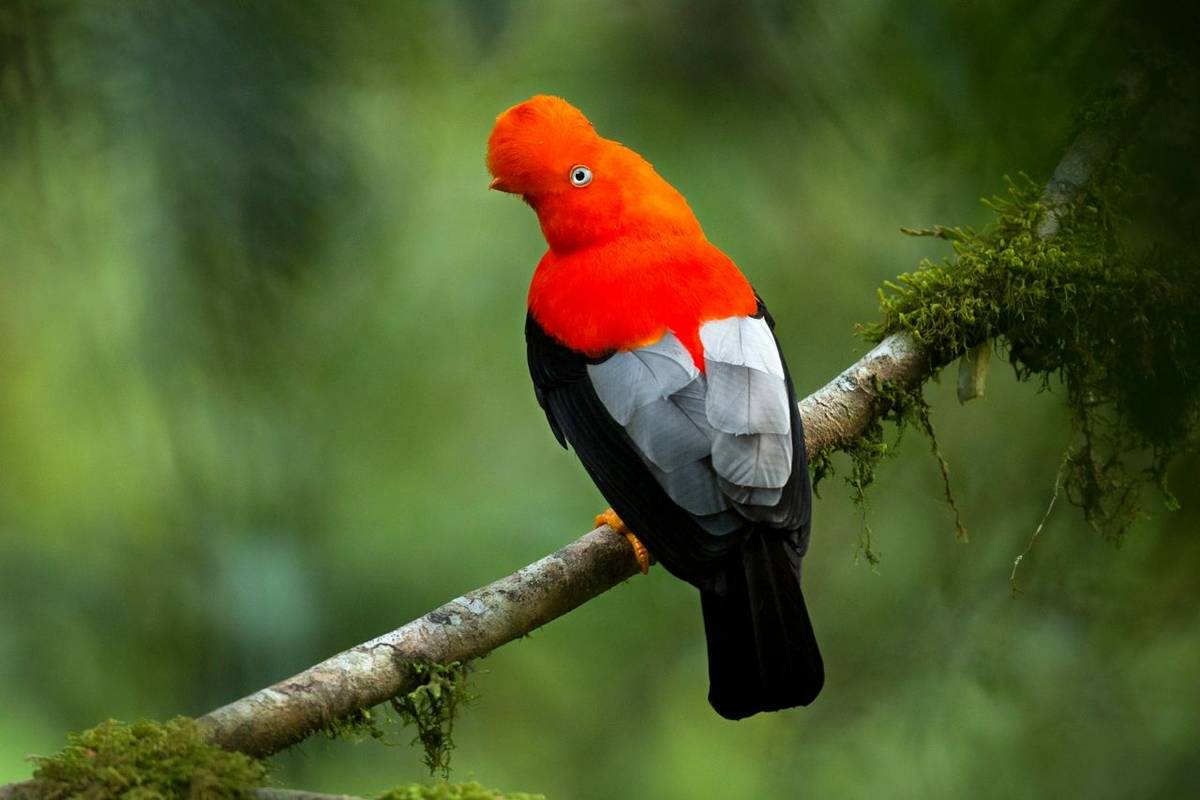The New Naturetrek Reserve in Scotland - The Stuckindroin Estate
 By This email address is being protected from spambots. You need JavaScript enabled to view it.
By This email address is being protected from spambots. You need JavaScript enabled to view it. Chairman & Founding Director
Our Chairman and Founding Director, David Mills, is delighted to share an exciting update on Naturetrek's mission to invest our profits from 40 years of operating wildlife holidays in conservation and nature restoration projects...
Today, 4th August 2025, Naturetrek takes ownership of a Scottish estate, Stuckindroin, situated at the head of Loch Lomond in Argyll and Bute. The Gaelic translation of the estate’s name is either “Pinnacle of the Deep” or “Pinnacle of the Thorns”, both of which are fitting since the estate includes Ben Vorlich, the steep eastern slopes of which rise from the deepest part of Loch Lomond, while areas of hawthorn are to be found on its northern slopes. It is a stunning site, and our goal here is a long-term one… to achieve the restoration of native Scottish (temperate) rainforest and other nature-rich habitats across the estate’s 3,609 acres over the next 200 years, from the summit of Ben Vorlich down to the lochside. We will do this in partnership with an experienced conservation organisation well-suited to enabling such an ambition; details of this partnership, and the many exciting projects to come, are being finalised, to be revealed in the near future.
For so many years, we have been looking for just such an opportunity in the British Isles, so often dissuaded or prevented from such an investment in nature by the diametrically-opposed interests of neighbouring landowners. At last, however, in the Scottish Highlands of the Loch Lomond & The Trossachs National Park (LL&TTNP), we have found a landscape cocooned by neighbours with a similar vision. Most reassuringly, the current park plan of the LL&TTNP, 'Future Nature', sees a national park authority determined to manage a landscape with nature restoration as a top priority.
Excitingly, within the park too, our neighbouring landowners share our, and the park authority’s goal, similarly engaging with local nature restoration and conservation projects. To the east of Stuckindroin, just a few hundred metres across the quieter northern waters of Loch Lomond, RSPB Inversnaid is an inspirational example of what 30 years of careful management for woodland (Scottish temperate rainforest, see Alliance for Scotland’s Rainforest) and nature restoration can achieve – the reserve being an integral component of the 18-year-old Great Trossachs Forest Project, a partnership between Forestry and Land Scotland, the Woodland Trust for Scotland and RSPB Scotland. To the north of Stuckindroin is the Wild Strathfillan Project, an ambitious endeavour bringing together a large-scale partnership of landowners in the north of the park, inspired and driven by the Loch Lomond & Trossachs Countryside Trust. Finally, on the western side of the loch, the Loch Lomond Rainforest Project is currently being formulated, with Stuckindroin at its heart. Indeed, we hope that Stuckindroin will be an integral part in all these innovative and exciting landscape scale projects.

Wood pasture on the estate – habitat that we will be expanding and improving for Black Grouse and other important species such as Cuckoo and Whinchat.

Stuckindroin's farmhouse.
Stuckindroin spans an interesting area, its altitudinal range, from Loch Lomond, just above sea level, to Ben Vorlich at 3,094 feet, providing appealing habitat diversity, from loch shore and lochside meadows, to Scottish rainforest and wood pasture systems comprising native oak, ash, birch, rowan and alder, to high montane slopes protected within an SSSI on account of their rich flora. Already, we have been able to facilitate surveys of the fauna and flora this summer and have been pleased by the results. Golden Eagle, Ptarmigan, Greenshank, Golden Plover and even a migrant Dotterel have been recorded from the higher ground, while Black Grouse, Whinchats, Wood Warblers and a singing Icterine Warbler have been found in and around the woodlands. The first phase of botanical surveys is currently under way, and we can’t wait to see the results. We’ve found swathes of Melancholy Thistle and Globeflower so far this summer, and the estate offers exciting potential for the protection and extension of areas supporting a rich and rare flora.

Existing native woodland, part of Scotland's temperate rainforest (and home to summering warblers, flycatchers and Redstarts, as well as rare and localised mosses and lichens), will be improved through better management of herbivores.

Looking north to the hills and mountains within the Wild Strathfillan project. Stuckindroin will be at the heart of this wider management plan to restore the network of native woodlands and upland and montane habitats.
None of this inspiring and ambitious work to scale up rainforest and nature restoration within the national park would be possible without the agreement and enthusiastic support of so many of the landowners within the park. Remarkably, having spoken to the owners of the neighbouring estates to Stuckindroin, it has been heartwarming to find all of them to be similarly minded, committed to a future of nature restoration and conservation. So where, over 20 years in Ecuador, in partnership with EcoMinga, we have worked to buy primary cloudforest from farmers otherwise intent on clearing it for cultivation and built a cloudforest corridor between two Andean national parks in the process, and more recently we’ve acquired secondary forest in the Apennines to assist Salviamo L’Orso in their focus on the conservation of large carnivores, in Scotland our goal is firmly focused on the regeneration and restoration of Scottish (temperate) rainforest, peatlands and other nature-rich habitats, helping to combat the impacts of climate change and the biodiversity emergency we are facing. It’s an exciting project – another step towards Naturetrek’s foremost mission, to invest in, and thereby bring positive impact and benefit to, nature and the environment.
Stand by for updates and more information on our partnership and plans for Stuckindroin hereon!



 Loading search...
Loading search...

